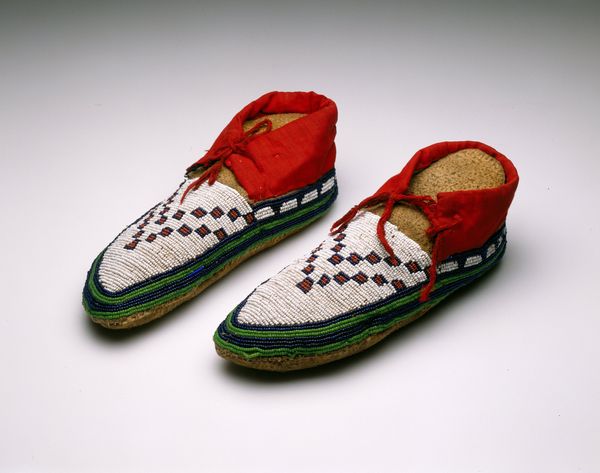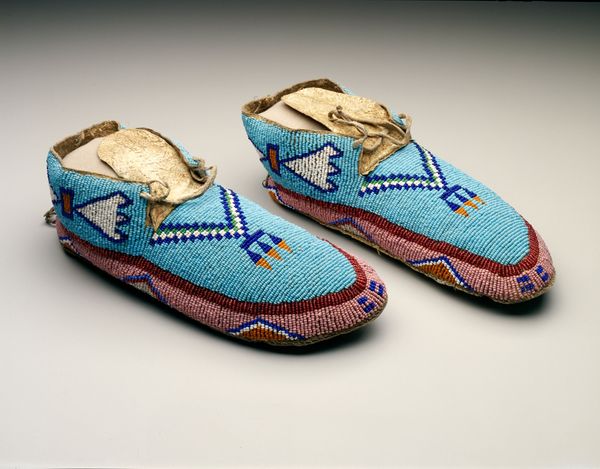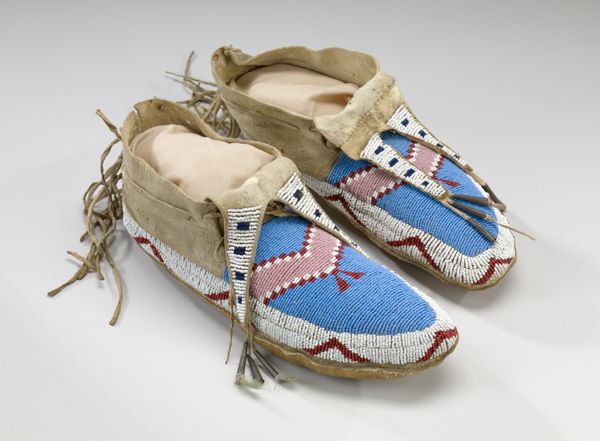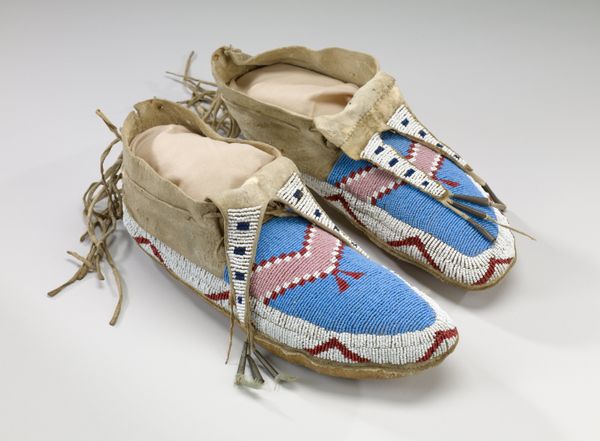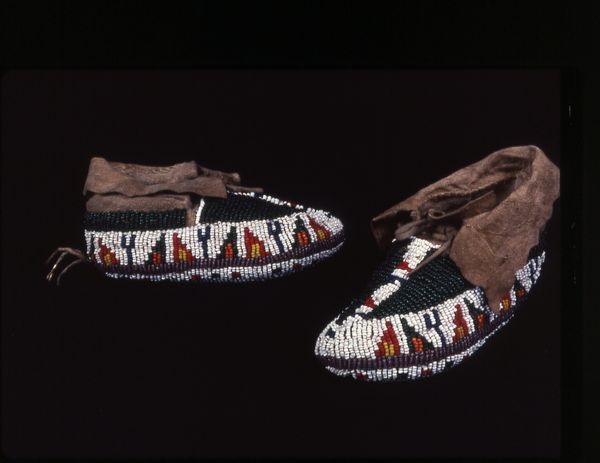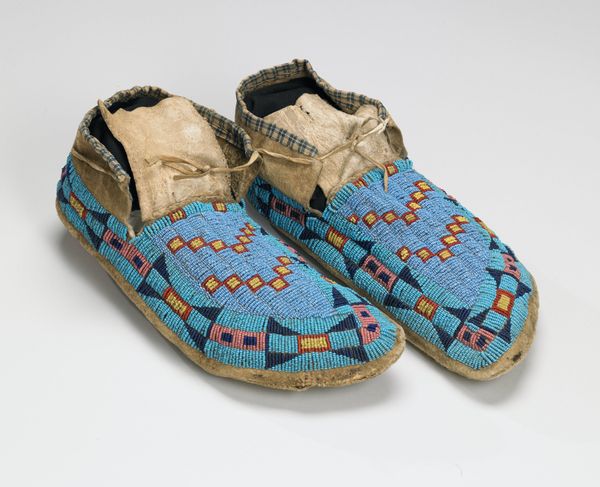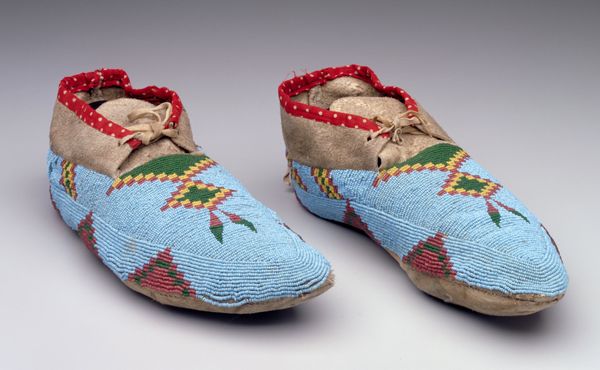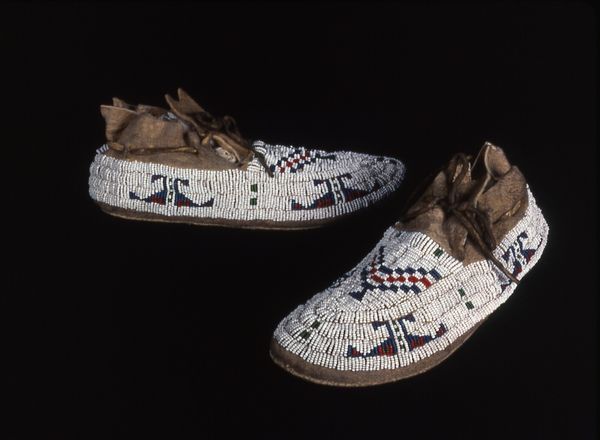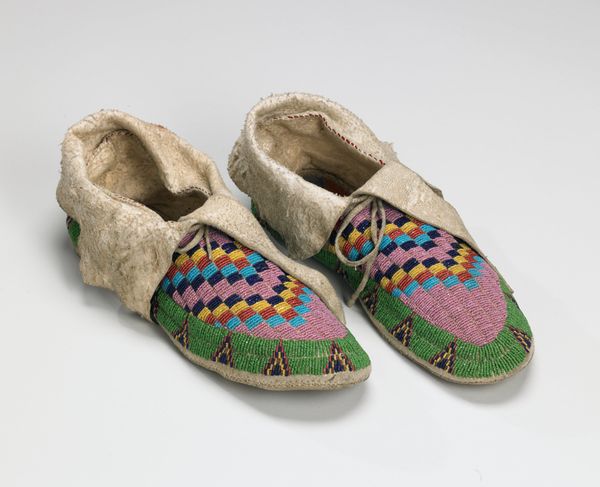
textile
#
textile
#
indigenous-americas
Dimensions: a: 9.3 × 26.8 × 13.8 cm (3 5/8 × 10 1/2 × 5 1/2 in.) b: 8.8 × 29.2 × 13.6 cm (3 1/2 × 11 1/2 × 5 1/4 in.)
Copyright: Public Domain
Curator: The dialogue begins now. Editor: Here we have a pair of moccasins, made sometime between 1875 and 1900, by an artist of the Sioux people. They’re textile and beadwork, so intricate! I'm struck by the bold colors and geometric patterns. How should we interpret such beautifully crafted objects? Curator: Think about what these shoes *mean*. These aren't just foot coverings, are they? The vivid colors, the geometric precision... what do they evoke in you? Think about their original owner: these patterns encode personal and tribal stories. We see visual memory at play. Editor: That makes me think about symbols. Is the specific design important to distinguish between tribes? I mean, could someone reading the symbolism decipher meaning through this design? Curator: Potentially. Color symbolism varied, but certain colors held specific cultural meaning: red for courage, blue for spirit. These shapes represent more than mere decoration. They echo cosmology, the relationship to the land. How might the act of wearing them have transformed the wearer? Editor: Transform…so it's almost like wearing a map or a prayer? Maybe each step would resonate differently. So much intention went into this piece of folk art. Curator: Precisely. Each carefully placed bead whispers of connection – connection to community, ancestors, the very earth walked upon. Editor: That adds so much depth. I'll never look at beaded moccasins the same way again! I appreciate understanding how seemingly simple forms can hold complex cultural significance. Curator: Yes, visual literacy unlocks hidden histories, doesn't it?
Comments
No comments
Be the first to comment and join the conversation on the ultimate creative platform.

